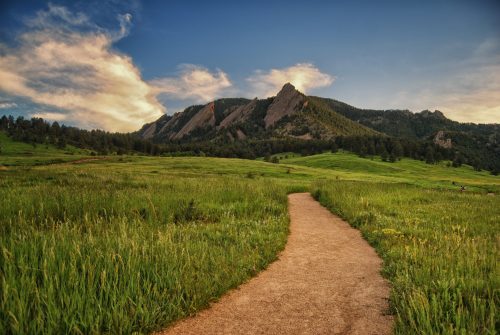
The Greg Franta Leadership Fund
Greg Franta is remembered an integral part of the RMI family and considered one of the fathers of the green building movement.
Upon his sudden and tragic death in 2009, RMI and friends and family of Greg set up the Greg Franta Leadership Fund to honor and continue his work and legacy.
Greg Franta, An Appreciation
By Amory B. Lovins
Greg Franta, FAIA, was “revered nationally and internationally as an architect and green building consultant, with special expertise in solar design and daylighting of buildings,” wrote Nadav Malin on www.buildinggreen.com. But he was more than that. Many felt, as I did, that he was the very best—the world’s leading integrative architect of superefficient, beautiful, and delightful buildings.
In his private practice and then at RMI after our practices merged in 2005, Greg helped to design upwards of a thousand buildings in about fifty countries, including one-third of the world’s LEED Platinum buildings. Even more importantly, Greg—probably more than anyone else—shaped the modern understanding of integrative design, both through projects and through an enormous amount of teaching: green architect Bob Berkebile says Greg did “probably more workshops, training, and teaching than any other architect.”
When I met Greg around 1982, he’d already received his architecture degrees from the University of Colorado (1973) and Arizona State (1976), the latter after studying under passive-cooling pioneer Jeff Cook. Greg had hatched a little practice called SunDesigns “tucked under the rafters” (as Alex Wilson reports) of Aspen’s top architect, Fritz Benedict. He joined Solar Pathways, founded in Glenwood Springs in 1976 by Robert Clarke, who went on to found and lead Alpen Glass in Boulder. ENSAR Group—the name evokes Energy and Solar Architecture—grew out of that practice. ENSAR did the 1982 energy simulation for my passive-solar banana farm in Old Snowmass, among the first of the world’s most energy-efficient buildings that Greg helped to design—but four years earlier, his own passive-solar house had earned that accolade as the cover story in Solar Age magazine. In the late 1970s he was also on the Board of the American Solar Energy Society, bringing solar-energy designers and architects together.
Greg’s mastery and reputation steadily grew. He led commercial-buildings research at the Solar Energy Research Institute (SERI), which later became the National Renewable Energy Laboratory. Quickly promoted to Senior Architect, he coauthored SERI’s Solar Design Workbook in 1981, developed vital simulation tools, and invented the “elimination parametrics” technique that’s now at the core of understanding the interactions betweens a building’s different energy uses. Leaving SERI to found ENSAR’s Denver office, Greg became the world’s top practitioner of daylighting and of tuned superwindows, helping us all understand how these tools, properly integrated, could transform both energy and aesthetic performance while reducing construction cost. Having coauthored the American Institute of Architects’ Energy in Architecture: Techniques and Applications in 1981 and Energy Design for Architects in 1988, then Solar Building Architecture (MIT Press, 1990), Greg coauthored AIA’s 1997 Glazing Design: Handbook for Energy Efficiency, and had me write its foreword, as we realized together that this remarkable technology permitted largely or wholly passive buildings in nearly any climate.
Meanwhile, Greg worked hard to reform architecture’s leading institutions. He helped found and chaired AIA’s first Energy Committee in 1973, then was instrumental in founding in 1990 AIA’s Committee on the Environment, which he chaired in 1994 and which absorbed the Energy Committee. These Committees and their networks led the transformation of the profession with tools like the AIA’s Top Ten Awards—still the benchmark of green design—and the Environmental Resources Guide. AIA’s initiatives to ban ozone-depleting building materials and put efficient buildings at the core of federal energy policy were highly influential, setting the stage for today’s national energy strategy. As Greg inspired and informed thousands of designers to see how all parts of the design could fit together to create something far greater, and the profession recognized the profound implications of his work, he became President of the American Institute of Architects’ Colorado chapter in 1978, and seven years later, the youngest-ever member of AIA’s national Board. Later he also chaired the Sustainable Buildings Industry Council.
Along with his predecessor leading RMI’s green-buildings work—our Senior Fellow Bill Browning, Hon. AIA, who perhaps more than anyone invented the whole concept of green development—Greg was among the handful of bold leaders who from the early 1990s created the U.S. Green Building Council and its LEED Standards, of which he became one of the five senior teachers and examiners. The U.S. Green Building Council recognized Greg just last fall, when its President, Rick Fedrizzi, said:
When the USGBC was just an embryo, this group of astounding achievers came together to become what we consider at USGBC to be the founders of the green building movement. These amazing individuals have leadership abilities that are transforming our world, and thanks to them, we’ve got a movement now, we’ve got energy now, and we’ve got true collaboration between groups like USGBC and AIA.
The last emails I had from Greg were about another of those green-architecture pioneers, our colleague Gail Lindsay, FAIA, who also died too soon, just a week before him.
Greg and I worked closely together on scores of projects from the mid-’80s onward, including the Greening of the White House, whose nongovernmental side he and Bill Browning co-led. His better-known projects included the Sydney Olympic Village, Wal-Mart’s first Eco-Mart, and the Greening of the Pentagon. We had wonderful adventures all over the world, on probably every continent but Antarctica, including several notable weeks in Tbilisi. For months in 1992, I even lived in Greg’s Boulder house while writing The State of the Art: Space Cooling.
By the ’90s he was our top charrette leader for the most challenging and consequential engagements. Our collaborations were exceptionally effective, thanks not just to his technical mastery but to how he could get people to work together, open their minds, and make magic happen. As Bob Berkebile says, “Most people in architecture met Greg as a daylighting expert first, and then as an energy expert. But the reason he was on so many [design] teams was his broader skill in team-building and his personal energy and enthusiasm.”
Green-building pioneer Alex Wilson, too, notes how Greg catalytically imparted “…his humor and unbridled energy to groups often including many hard cynics and skeptics of sustainable design…pulling pinstriped, corporate and institutional CEOs from deep in the green-design end zone to later emerge as sustainable-design leaders.”
One of Greg’s most potent tools was his disarming humor—from his Norwegian-farmer jokes delivered deadpan in Minnesota dialect over a drink, to technical slideshows that would suddenly wake you up by illustrating “footcandle” as a candle cast in the shape of a human foot. His infectious humor, though, wasn’t just a mark of a really funny guy, but also a way to penetrate defenses with insidiously effective ideas about how green design could make sense and make money—whether or not you cared about the environment.
By intellect, charm, warmth, vitality, and force of character, Greg led many thousands of designers and developers to do what they didn’t know how to do and didn’t even know they could do. To paraphrase Guillaume Apollinaire:
Come to the edge, he said. They said: We are afraid.
Come to the edge, he said.
They came. He pushed them. And they flew.
Greg’s charrettes often subtly and irresistibly enticed us to leave our comfort zone and discover new ways to design that transcended what we’d imagined was possible. He’d figured out the wonderful trick that e.e. cummings described thus: “There is a knack to flying. You must throw yourself at the ground and miss.”
Greg’s mind and spirit were always flying. Now he’s just gained more altitude.
So we’ve lost our beloved friend and colleague at the height of his powers. But we’re also lucky. Greg lived long enough and worked hard enough to embed his work irreversibly in the design and real-estate professions throughout the world. Now the thousands whom he inspired will carry it on with a passion and an energy that would make him proud of us all.
As Greg’s passing reminds us, the human design is frail, life is uncertain, and there’s not a day to lose. In our practice of applied hope, if we use each day to the fullest, then every day is a good day to die. I’m sure Greg would like us to live that way too. He beckoned us to the edge, and it’s time for us to fly.

Donate Today
and help us celebrate his life, and further his contributions to a clean energy future.